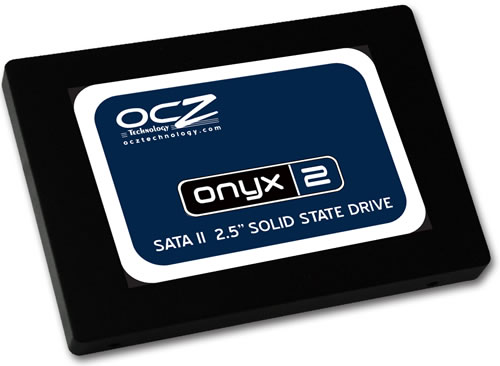OCZ's solid-state offering has expanded further today with the introduction of second-gen Onyx drives. Designed for mainstream desktop and mobile PCs, the Onyx 2 series is faster, more durable, and cheaper than its predecessor. The drives make use of MLC NAND flash chips along with a SandForce controller, though the exact version isn't specified in the press release or product page.
The company says its new drives can attain peak read and write speeds of 270MB/s and 265MB/s with up to 10,000 random write IOPS (4k aligned). That's a hair slower than OCZ's Agility 2 and Vertex 2 lines, which also come with a three year warranty, versus the Onyx's two years. TRIM support is present for folks running Windows 7, and the drives are rated for a MTBF of 1.5 million hours.

OCZ didn't specify a ship date or price, but reports around the web say the 120GB Onyx 2 will cost $185 at retail, while the 240GB will be $410. By comparison, the 120GB Agility 2 runs more than $250 online. The Vertex 2 similarly priced.
https://www.techspot.com/news/40414-ocz-announces-mainstream-onyx-2-ssds.html